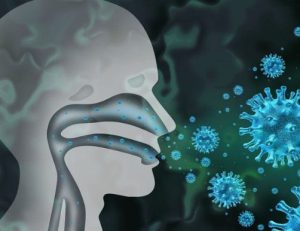The common cold is a viral infection of your nose and throat. It’s usually harmless, although it might not feel that way. Many types of viruses can cause a common cold. Healthy adults can expect to have two or three colds each year.
Contents
What is a cold?
A cold is a virus that infects the upper respiratory tract; nose, sinuses, voice box, and throat. More than 200 different viruses can cause a cold, but the rhinovirus is the most common culprit.
Colds are spread when you breathe in a virus that has been coughed or sneezed into the air by an infected person or have close personal contact with an infected person. They can also be spread by shaking hands with an infected person or touching an infected surface and then putting that hand to your eyes, nose, or mouth.
Colds are more common in the fall and winter, but you can get them any time of year. Each year, adults have an average of 2 to 3 colds, and children have even more.
The Start of a Cold:
It usually begins with a sore throat, and before you know it, you have also got these symptoms:
- Runny nose
- Sneezing
- Fatigue
- Cough
You usually don’t get a fever with a cold. If you do, it may be a sign you’ve got the flu or an infection with a bacteria.
For the first few days that you’re sick, your runny nose will be watery, but it turns thicker and darker after that. You may also get a mild cough that can last into the second week of your cold.
Since a cold can trigger an asthma attack, people with asthma should check with your doctor to see if you need to change your regular treatment plan.
If you cough up thick or dark mucus or you get a fever, you may have an infection with a bacteria. See your doctor to find out how to treat it. Also see them if your cough doesn’t get better after a few weeks.
Your symptoms usually start between 1 and 3 days after you get infected with a cold virus. They typically last for about 3 to 7 days. By then the worst is over, but you may feel stuffed up for a week or more.
You are most contagious during the first 3 days that you are sick, but it’s still possible to spread it during the first week.
What are the common cold stages and symptoms?
Colds and cold symptoms tend to follow a certain progression, which is outlined below. This is the typical pattern, but it’s possible that you’ll experience the timing and stages slightly differently.
- Incubation: After you’re exposed to a cold virus, it typically takes 1 to 3 days for you to develop symptoms. However, it’s possible to develop symptoms as soon as 10 to 12 hours after exposure.
- Symptoms peak: Cold symptoms peak at 1 to 3 days. The main symptoms include sore throat, stuffy nose, runny nose, cough, discomfort, sneezing, fever (more common in children), headaches, clear, watery discharge from your nose (mucus), and body aches.
- Symptoms level off and fade: Cold symptoms usually last anywhere from 3 to 10 days. After 2 or 3 days of symptoms, the mucus discharged from your nose may change to a white, yellow, or green color. This is normal and does not mean you need an antibiotic.
- 10 days and beyond: Lingering symptoms can last up to 2 weeks in some people, especially runny nose, stuffy nose, and coughing. However, you should be on the mend at this point, and the symptoms probably won’t be as bad.
Q: Is it cold or flu?
The symptoms of flu can include fever or feeling feverish/chills, cough, sore throat, runny or stuffy nose, muscle or body aches, headaches and fatigue (tiredness). Cold symptoms are usually milder than the symptoms of flu. People with colds are more likely to have a runny or stuffy nose.



